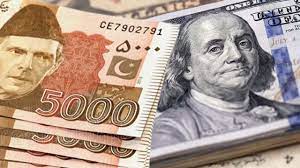According to the State Bank of Pakistan, the local currency depreciated by 0.44 percent from yesterday’s finish of Rs221.5 to settle at Rs222.47 per dollar.

According to information gathered by Mettis Global, the value of the Pakistan Rupee has decreased by Rs16.64 or 7.52 percent since the start of this fiscal year.
The PTI’s lengthy march, which is scheduled to start today, has “dampened sentiments once again,” according to Tresmark’s Head of Research Komal Mansoor, and as a result, the value of the rupee is declining.
In addition, investors prefer to maintain their dollar investments due to the increased risk profile, she said.
Early this week, the probability of a sovereign default grew to its highest level since November 2009. On October 25, the country’s five-year credit default swap (CDS), a kind of protection against the possibility of a sovereign default, climbed by more than three percentage points to reach 52.8pc, a 13-year high.
Investors’ decreasing confidence in Pakistan’s capacity to repay its international loans is reflected in the growing CDS level.
The protracted march and political unrest, said to FAP Chairman Malik Bostan, were further factors in the rupee’s decline. He claimed that while banks were also buying the dollar at greater rates, which was driving up costs, importers were buying the dollar out of worry that the rate would rise.
Additionally, according to Bostan, exporters were keeping their gains abroad in the hope that the dollar’s value would increase, leading to bigger profits.
The FAP chairman urged the government and opposition parties to resolve differences via dialogue and issued a warning that the rupee would hit a new low if political uncertainty persisted.

